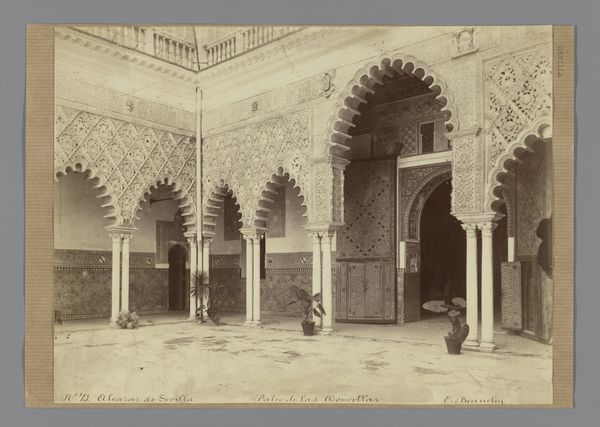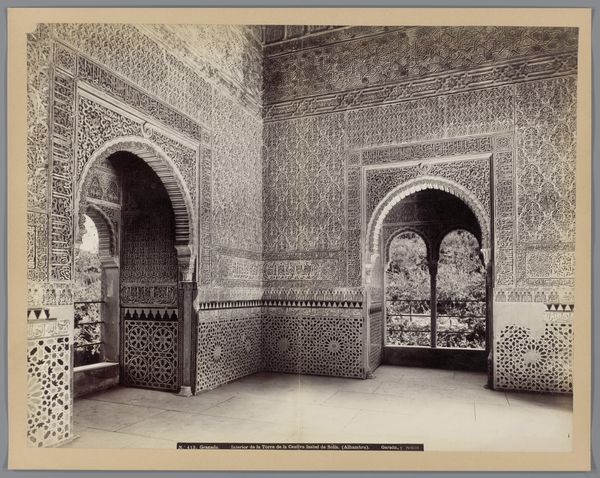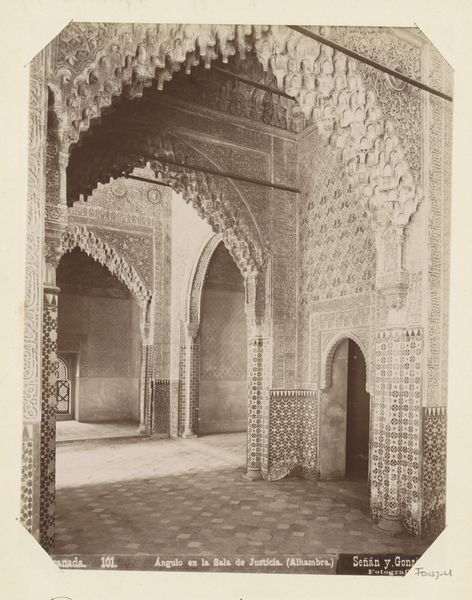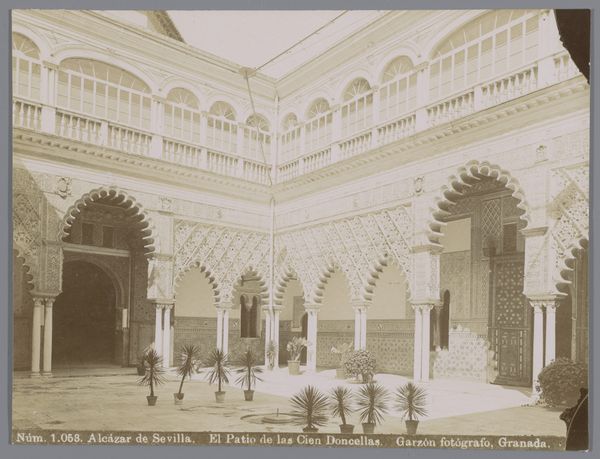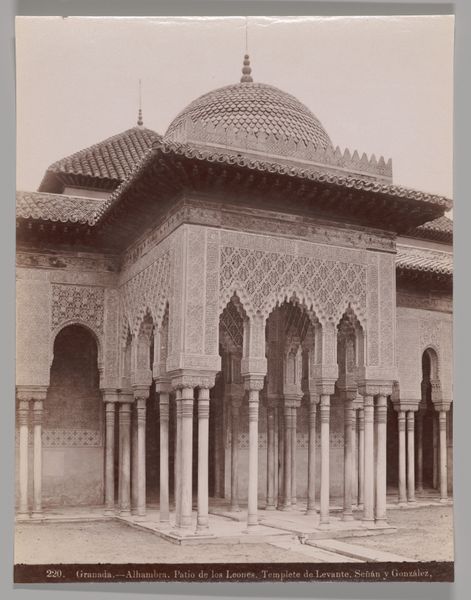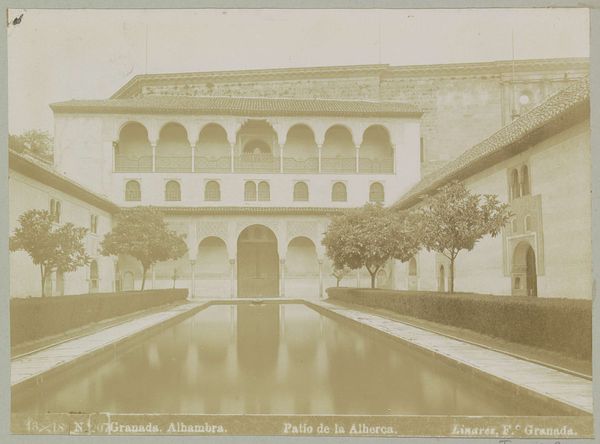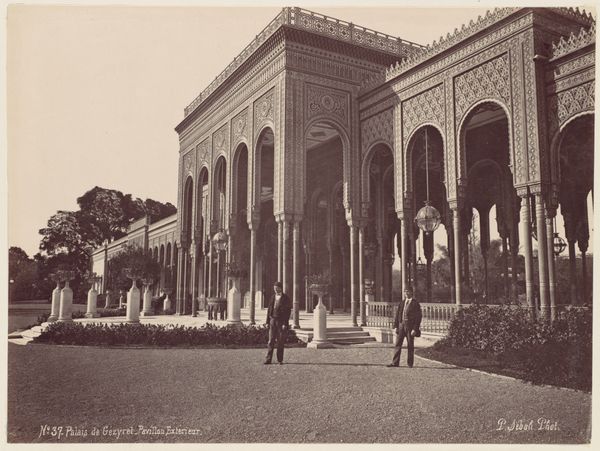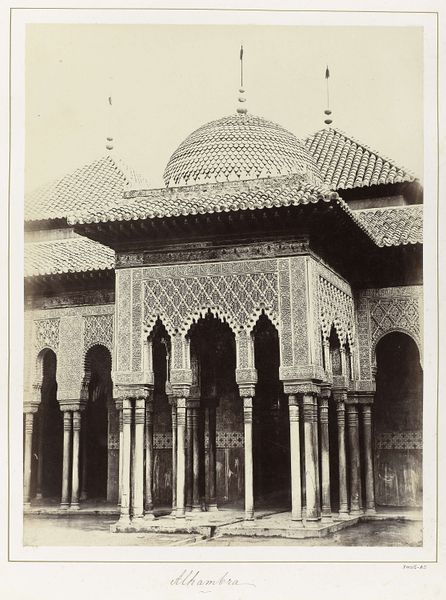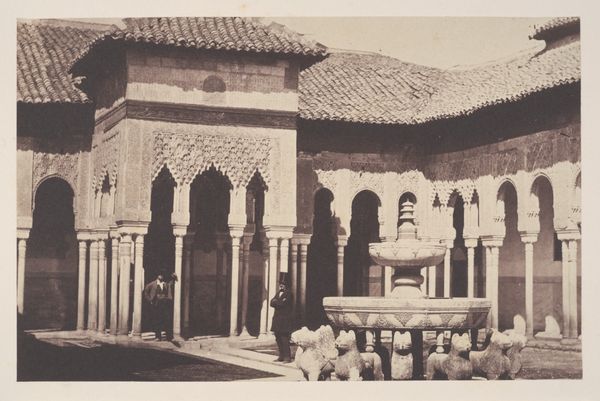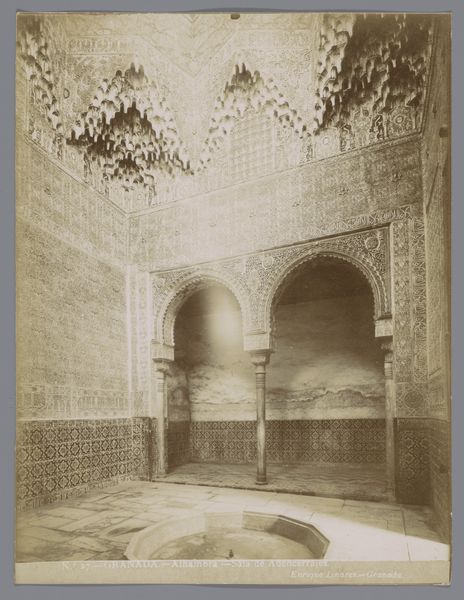
photography, architecture
#
historic architecture
#
photography
#
cityscape
#
islamic-art
#
watercolor
#
architecture
Dimensions: height 165 mm, width 214 mm
Copyright: Rijks Museum: Open Domain
Editor: This is a photograph by Enrique Linares, titled "Patio de los Arrayanes in het Alhambra van Granada," taken sometime between 1900 and 1930. The monochromatic tones give it such an antiquated feel. I’m really struck by how the artist captured the still reflection of the architecture in the water. What stands out to you when you look at it? Curator: What I see is an intersection of cultures frozen in time. The Alhambra, a palace-city born from Moorish Spain, represents a complex layering of identity. Linares, through his lens, is not just documenting architecture, he's presenting a narrative about power, religion, and artistic exchange. How does this image make you feel when considering Spain's history of colonialism and religious conversion? Editor: It’s definitely bittersweet. The beauty is undeniable, but you're right, it feels like there’s more to unpack about the power dynamics. The symmetry in the architecture contrasted with the organic shapes of the trees surrounding it feels intentional too. Do you think there’s a comment here on nature versus imposed order? Curator: Absolutely! The imposed order embodies the rigidity of colonial power structures, but look closer at the geometric patterns. They're not merely decorative; they’re rooted in Islamic artistic tradition, defying simple Western interpretations. It shows resilience and the continued presence of cultural heritage despite shifts in power. What can we learn by decentering a Eurocentric point of view here? Editor: It pushes me to appreciate the complexities of cultural exchange and legacies that can remain overlooked when we view things only through one lens. It’s a beautiful reminder to consider the many narratives embedded in a seemingly simple photograph. Curator: Precisely! Understanding art like this invites us to question dominant historical narratives and opens up a space for a more inclusive and empathetic understanding of our world.
Comments
No comments
Be the first to comment and join the conversation on the ultimate creative platform.
